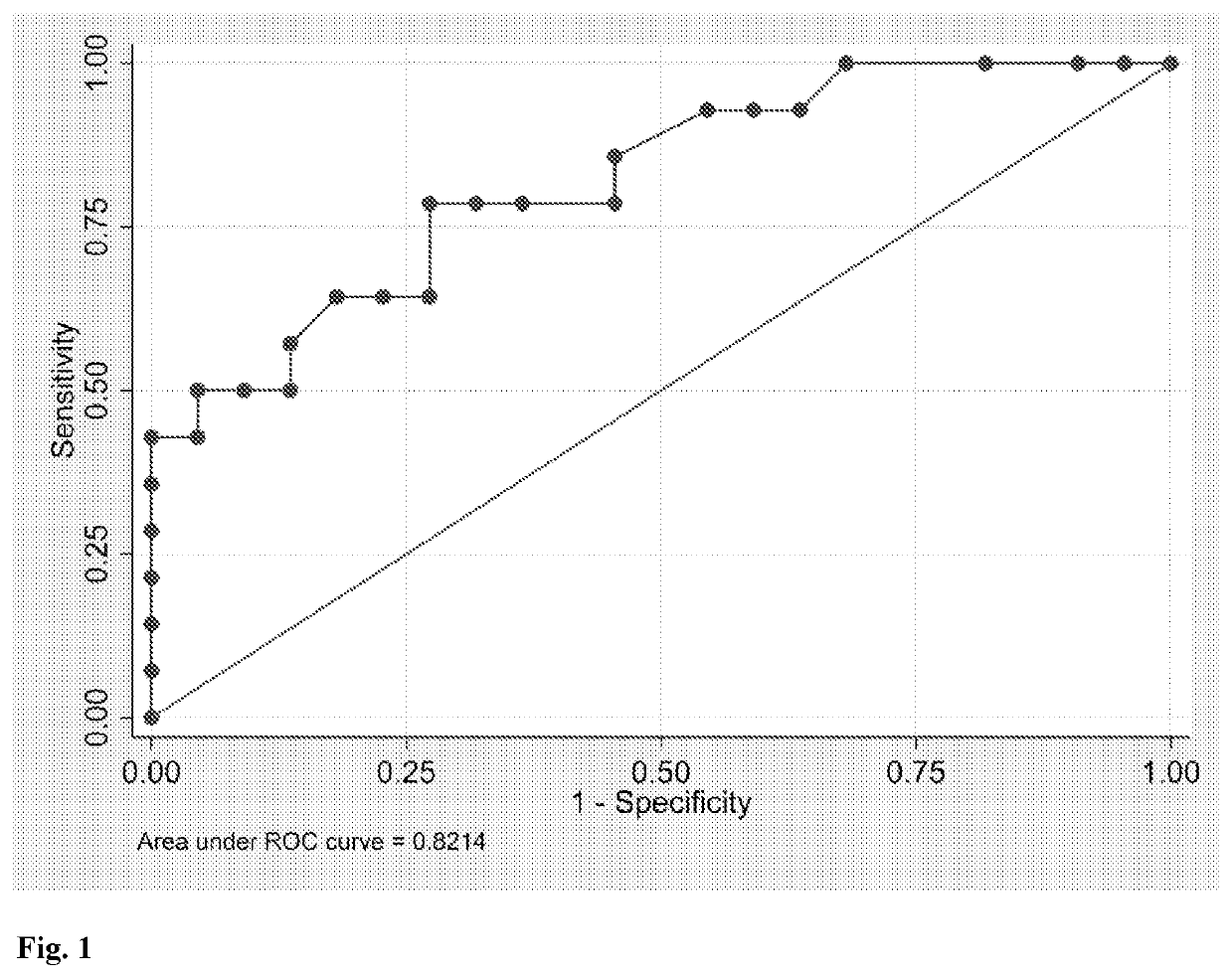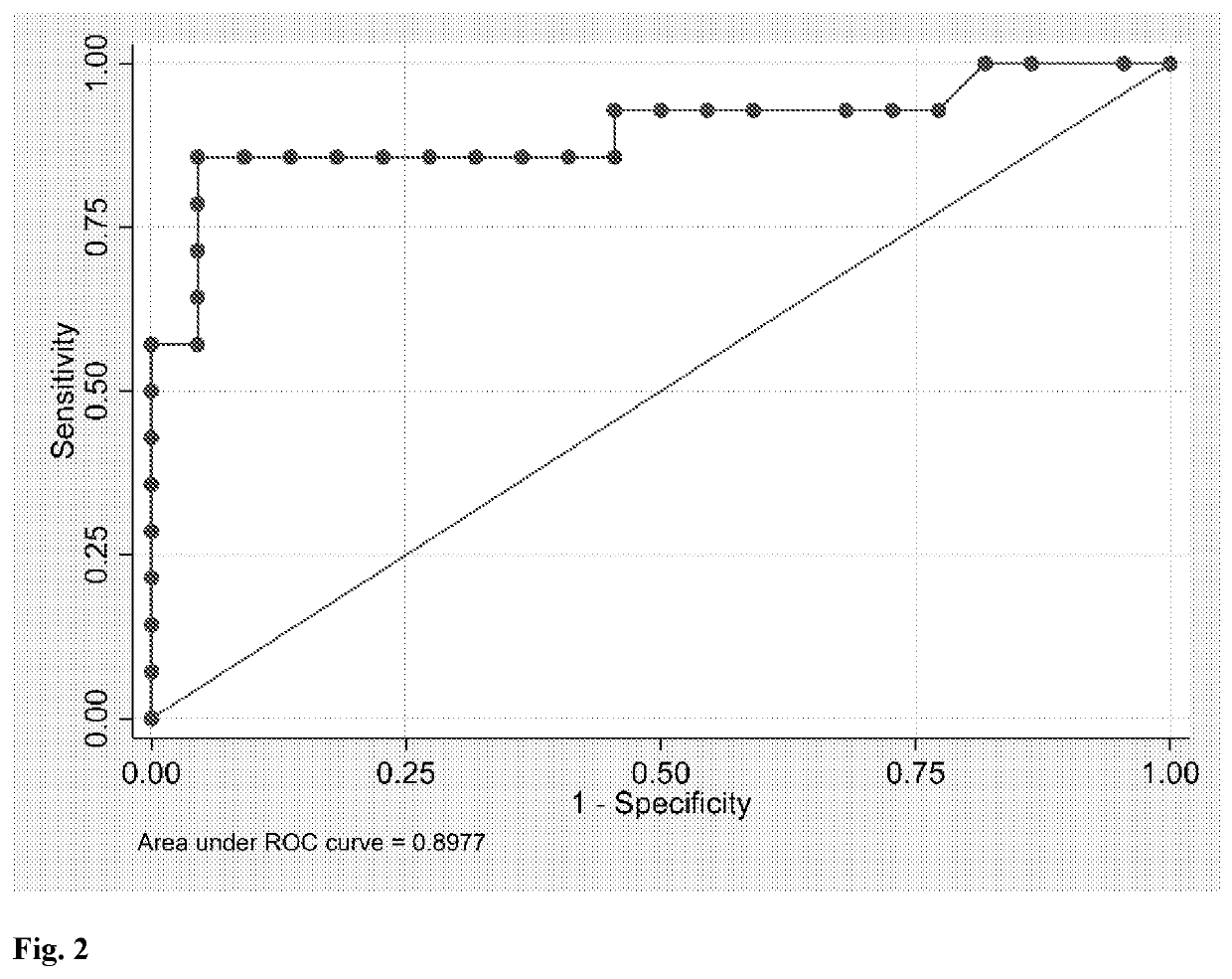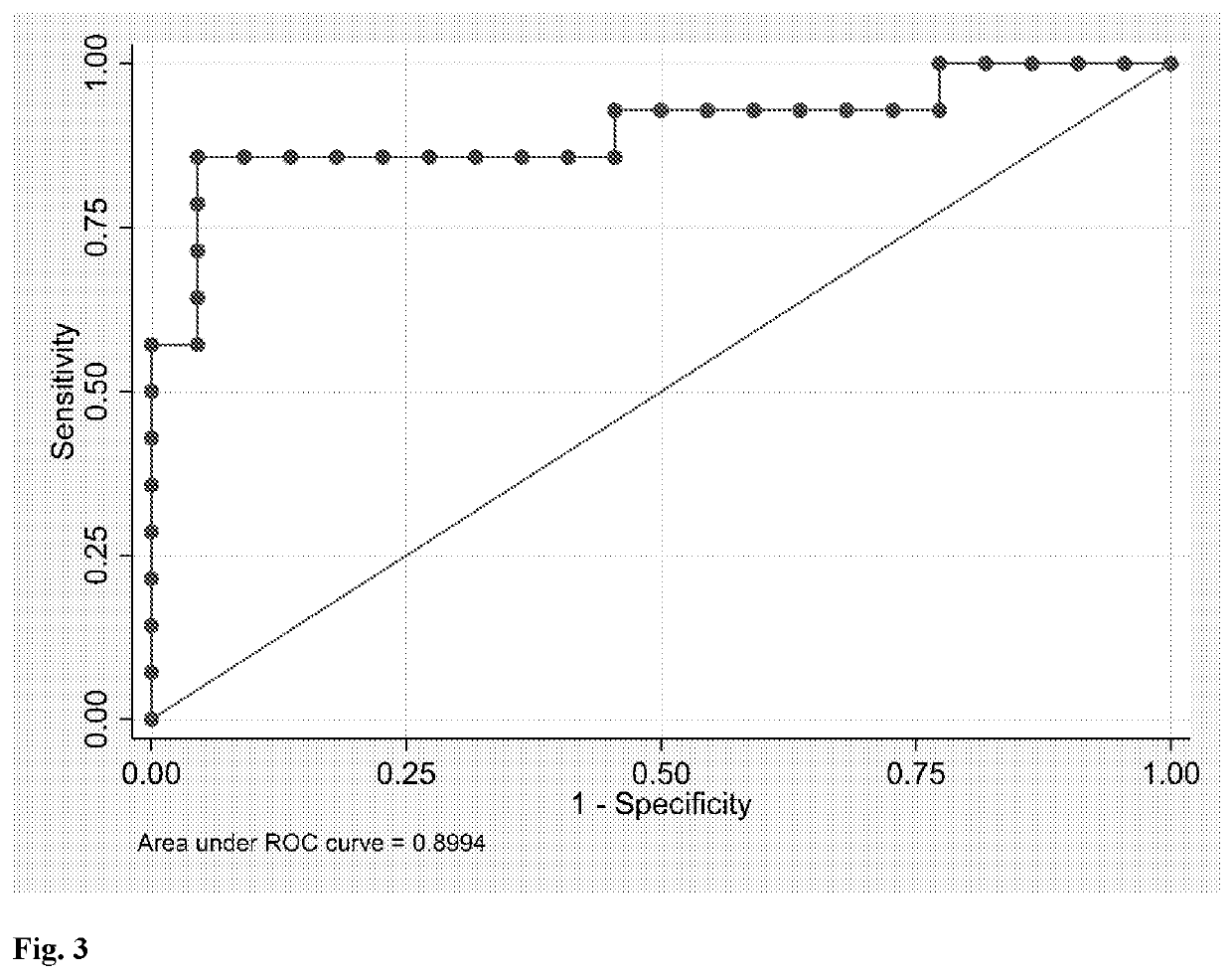In vitro method for identifying a pregnancy related disease
a technology for identifying pregnancy related diseases and in vitro methods, which is applied in the field of personalized medicine, can solve the problems of significant long-term adverse effects for both mother and baby, subsequent complications, and the association of gdm in the mother with a 70% lifetime risk of developing type ii diabetes, and achieves strong and cost-effective methods, effective treatment, and high sensitivity and specificity
- Summary
- Abstract
- Description
- Claims
- Application Information
AI Technical Summary
Benefits of technology
Problems solved by technology
Method used
Image
Examples
example 1
Gestational Diabetes Mellitus
Material and Methods
[0087]A case-control study was conducted. The selection criteria for the subjects were that they be pregnant women with a diagnosis of GDM. In total, 14 cases were recruited from the prenatal cohort of 80 women admitted to the Maternal-Fetal Unit at the Sotero del Rio Hospital in Santiago, Chile, between January and October 2015. The controls were the same cohort to generate a sample of 66 control pregnancies women. Both groups consisted of subjects with singleton gestation of equal socioeconomic level. Clinical enrolment and anthropometric data were collected at 11-14 week gestation, and a dental evaluation and full-mouth periodontal exams were then performed by one periodontics. All clinically relevant data for the study were stored in a computer database. Women were excluded if they had fewer than 18 teeth, had used systemic or topical anti-microbial / anti-inflammatory therapy for the previous 3 months. Written informed consent was ...
example 2
Material and Methods
Study Design
[0095]A case-control study was conducted, including patients with PE (n=10) admitted to the Maternal-Fetal Unit at the Sotero del Rio Hospital in Santiago, Chile. Women with a normal pregnancy were randomly selected to generate the control group (n=20) and related for age and socioeconomic status. Women with any associated medical disorders (such as pre-existing hypertension, renal disease, anemia, or diabetesmellitus) were excluded. Women were also excluded if they had fewer than 18 teeth, had used systemic or topical anti-microbial / anti-inflammatory therapy for the previous 3 months, or had a history of previous periodontal treatment. A dental evaluation and full mouth periodontal exams were performed by one periodontist. The study and collection of saliva and GCF for clinical and research purposes have been approved by the Ethics Committee of both the Universidad de los Andes and the Sotero del Rio Hospital. All patients provided writte...
PUM
| Property | Measurement | Unit |
|---|---|---|
| depth | aaaaa | aaaaa |
| depth | aaaaa | aaaaa |
| wavelength | aaaaa | aaaaa |
Abstract
Description
Claims
Application Information
 Login to View More
Login to View More - R&D
- Intellectual Property
- Life Sciences
- Materials
- Tech Scout
- Unparalleled Data Quality
- Higher Quality Content
- 60% Fewer Hallucinations
Browse by: Latest US Patents, China's latest patents, Technical Efficacy Thesaurus, Application Domain, Technology Topic, Popular Technical Reports.
© 2025 PatSnap. All rights reserved.Legal|Privacy policy|Modern Slavery Act Transparency Statement|Sitemap|About US| Contact US: help@patsnap.com



